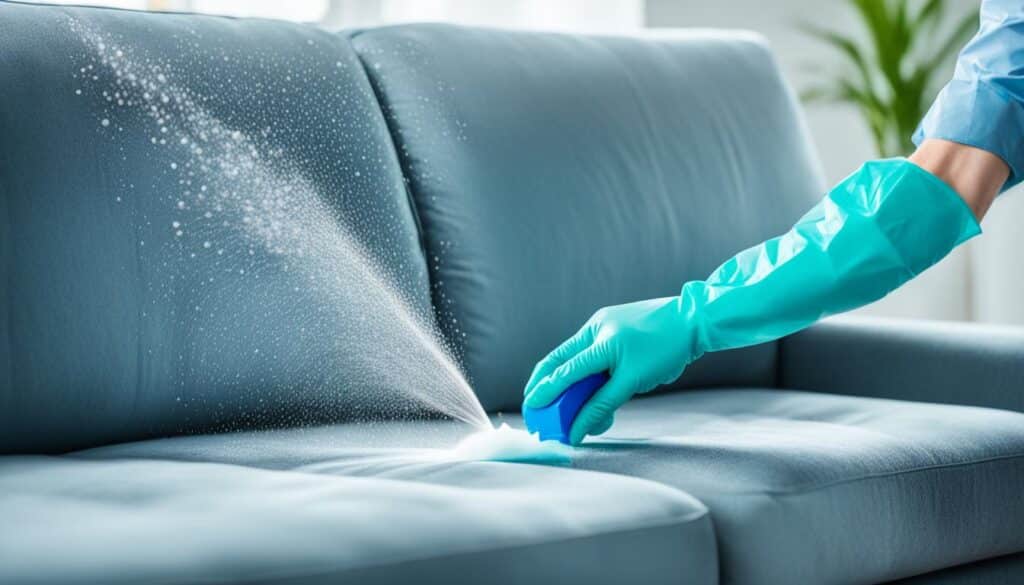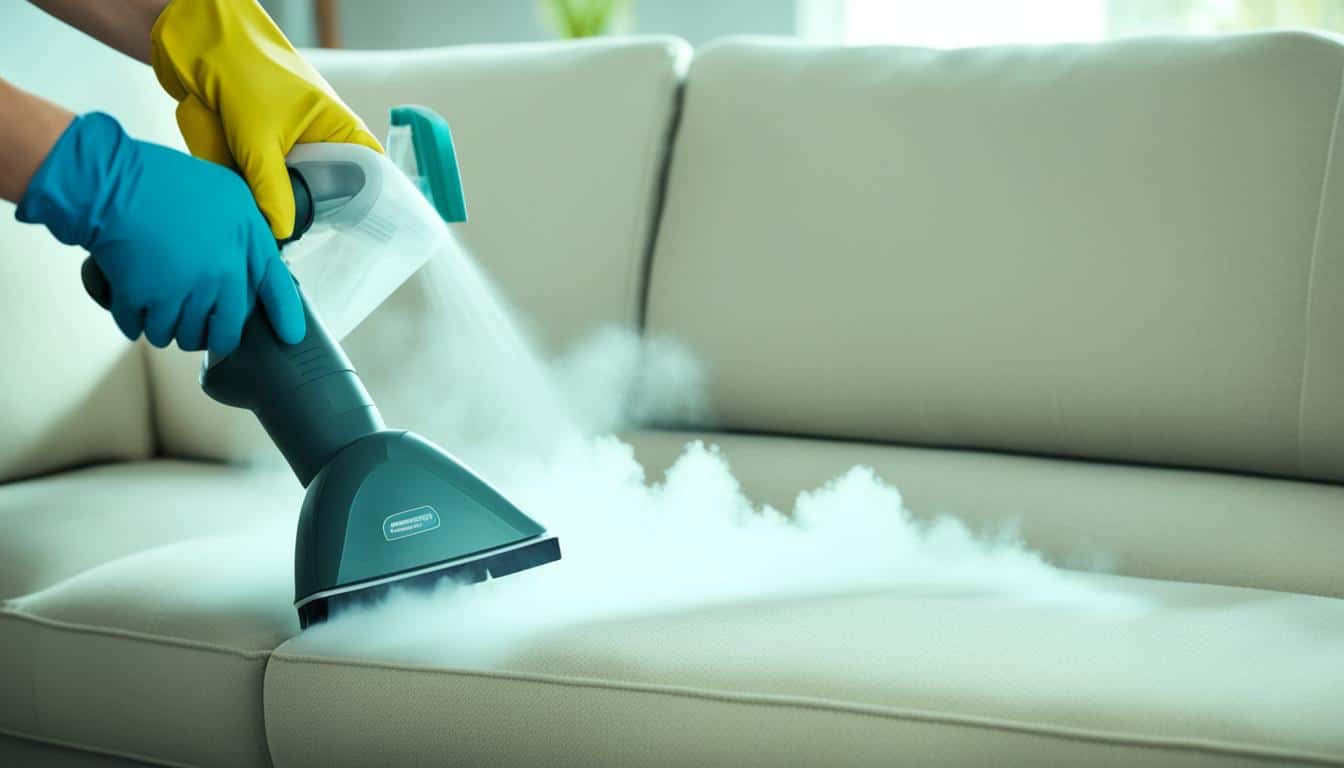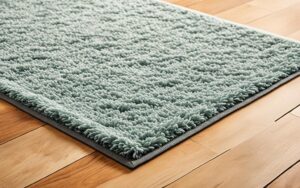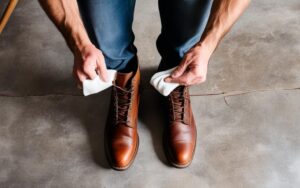Did you know that the average person spends about four hours per day sitting on a sofa? That’s a significant amount of time, and it means that keeping your sofa clean and hygienic is paramount for your well-being.
If you’ve recently acquired a second hand sofa, it’s essential to ensure that it is thoroughly cleaned before bringing it into your home.
Used couches may harbor unwanted germs, smells, and pests, so it’s important to take the necessary steps to clean and sanitize them effectively.
Tips for Sanitizing and Disinfecting Second Hand Furniture
When bringing second hand furniture into your home, it’s important to ensure that it is properly sanitized and disinfected to eliminate any germs or allergens that may be present.
Here are some effective tips to help you clean and sanitize your thrifted furniture:
1. Start with a Deep Clean
Begin by thoroughly cleaning the furniture to remove any surface dirt or debris. Use a vacuum cleaner with an upholstery attachment to remove dust, pet hair, and other particles.
For fabric furniture, check the cleaning instructions and use a mild detergent or upholstery cleaner suitable for the material.
2. Use Disinfectant Solutions
After the initial cleaning, disinfect the furniture using suitable disinfectant solutions. Look for disinfectants that are safe to use on different types of surfaces and materials.
Apply the disinfectant according to the manufacturer’s instructions and allow it to sit for the recommended duration to effectively kill any germs or bacteria.
3. Pay Extra Attention to High-Touch Areas
Focus on disinfecting high-touch areas such as armrests, handles, knobs, and buttons.
These areas are more likely to harbor germs and bacteria. Use a cloth or sponge soaked in the disinfectant solution to thoroughly wipe down these areas.
4. Consider Natural Cleaning Alternatives
If you prefer to use natural cleaning products, there are several options available. Vinegar and water solution is a popular natural disinfectant that can effectively kill many types of bacteria and viruses.
Alternatively, you can use hydrogen peroxide or tea tree oil diluted with water for their antimicrobial properties.

5. Allow Sufficient Drying Time
After disinfecting, allow the furniture to air dry completely before using or covering it. This will ensure that any residual moisture evaporates and prevents the growth of mold or mildew.
6. Consider Professional Cleaning Services
If you’re uncertain about sanitizing certain types of furniture or don’t have the time or resources, consider hiring professional cleaning services.
They have the expertise and equipment to thoroughly clean and disinfect your second hand furniture, giving you peace of mind.
By following these tips, you can effectively sanitize and disinfect your second hand furniture, creating a clean and safe environment in your home.
How to Remove Odors from Second Hand Furniture
When purchasing second hand furniture, it’s common to encounter unpleasant odors that need to be eliminated. Luckily, there are several effective methods for removing smells from thrifted furniture.
Here are some natural remedies and DIY odor removal techniques:
1. Baking Soda: Baking soda is a powerful odor absorber. Sprinkle a generous amount of baking soda on the surface of the furniture and let it sit for a few hours. Vacuum or wipe away the baking soda to eliminate the odors.
2. Vinegar Solution: Vinegar is known for its deodorizing properties. Create a solution by mixing equal parts of water and vinegar in a spray bottle.
Lightly mist the furniture with the vinegar solution and allow it to air dry. The vinegar smell will dissipate, taking away any lingering odors.
3. Activated Charcoal: Activated charcoal is highly effective in eliminating odors.
Place an open container filled with activated charcoal near the furniture or wrap the furniture in a sheet with activated charcoal sachets. Let it sit for a few days to absorb the odors.
4. Fresh Air and Sunlight: Sometimes, all your thrifted furniture needs is a breath of fresh air and some sunlight.
Place the furniture in a well-ventilated area outdoors, preferably on a sunny day. The fresh air and sunlight will help to naturally eliminate any lingering odors.
By using these natural remedies and DIY odor removal techniques, you can successfully deodorize your thrifted furniture and enjoy a fresh and pleasant-smelling addition to your home.
FAQs
How Often Should I Clean A Second-Hand Sofa?
It is recommended to clean a second-hand sofa immediately after purchasing it and then regularly clean it every 3-6 months. This will help maintain its cleanliness and hygiene.
Can I Use Water To Clean A Thrifted Sofa?
Yes, you can use water to clean a thrifted sofa, but make sure to check the cleaning instructions and fabric type before doing so. Some fabrics may require specialized cleaning methods.
How Can I Check For Pests In A Second-Hand Couch?
To check for pests in a second-hand couch, inspect the seams, crevices, and underneath the sofa for any signs of infestation such as fecal matter, eggs, or live bugs. If you suspect an infestation, consider professional pest treatment.
What Cleaning Products Should I Use For A Second-Hand Sofa?
The best cleaning products to use for a second-hand sofa depend on the fabric type. For general cleaning, mild soap, water, and a soft cloth work well.
For tougher stains, you can try fabric-specific cleaners or a mixture of vinegar and water.
How Do I Remove Stains From A Pre-Owned Sofa?
To remove stains from a pre-owned sofa, start by blotting the stain with a clean cloth. Avoid rubbing, as it can spread the stain.
Use a stain remover or a mixture of mild detergent and water to gently clean the stained area. Rinse with clean water and let it air dry.
Are There Any Natural Remedies To Remove Odors From Second-Hand Furniture?
Yes, there are natural remedies to remove odors from second-hand furniture. Baking soda is effective in absorbing odors. Sprinkle it on the sofa, let it sit for a few hours, and then vacuum it off.
You can also use activated charcoal or place coffee grounds in an open container near the furniture to absorb odors.









